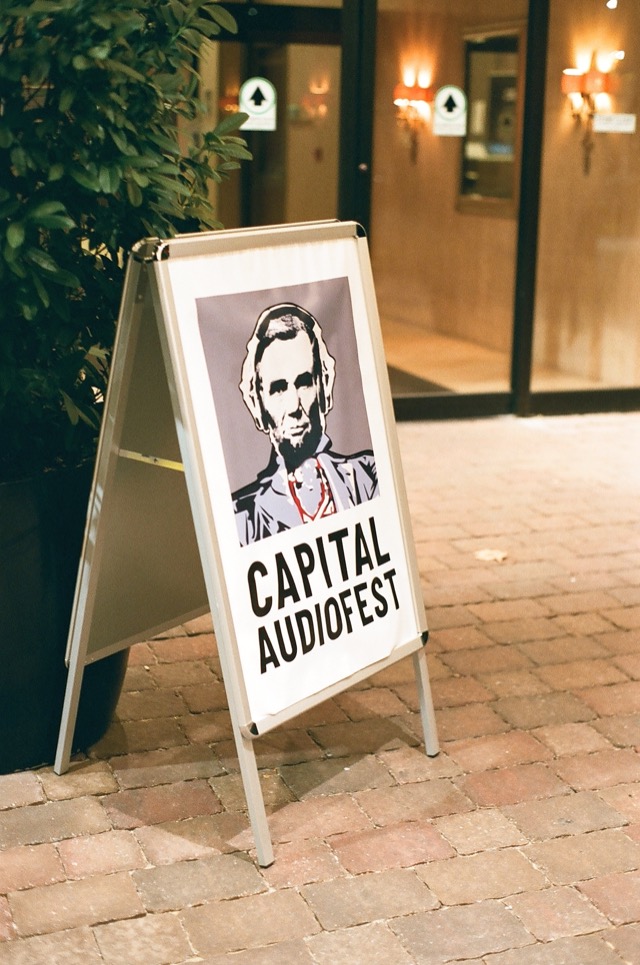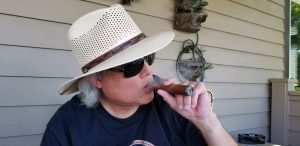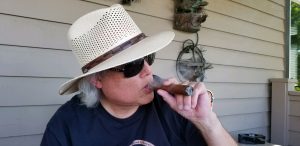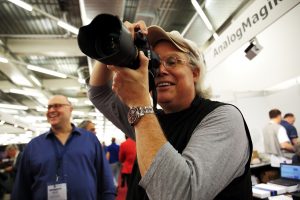I wasn't intending on going to the Capitol Audiofest this year at all, what with so many things still being shut down due to the virus and all. I was enroute from Philadelphia where I was doing some work, down to my home in Tidewater Virginia and decided to stop off briefly and see what was on. I didn't have a huge amount of time, much less than a full day, so what I saw at the show was very limited.
I don't keep up with the latest in the high end world and I spend more time on the production side than the reproduction side these days, so events like the Audiofest are important to me in order to be able to keep up. But because this is the case, read this show review in that light, because what I find exciting might be old hat to people who are more familiar with current fashions.
The show this year was smaller than it was two years back, but certainly had a huge number of attendees. It was packed in the hallways and sometimes the notion of social distancing became impossible because of the number of people in the listening rooms. I think everybody had been locked in for two years without being able to see new audio stuff, and people were just aching to come out and listen. It was great to see people that I had not seen in ages, as well as to see new equipment.
Now, that said, I will say that there was less room treatment than in previous years, both in treatment being employed in the demo rooms and treatment products available for sale. Jocavi Acoustics, which was the only company I saw selling acoustical treatment products, wasn't even listed in the program booklet. Now, I will say that Jocavi makes a great line of stuff from simple absorption and diffusion panels, to fancy construction products employed in building floated rooms, but they were all alone.
The rooms needed treatment too... almost all of the rooms I went into had a huge bump in the lower midrange somewhere, resulting in tubby sound. It's very hard to audition loudspeakers in a room that is so obviously terrible. Bass traps would have helped so many of those audition rooms out so dramatically.
Loudspeakers
There were a huge number of smaller loudspeaker manufacturers at the show, unfortunately stuck in terrible-sounding rooms in most cases. Alta Audio was showing off the Alec, a beautiful-looking two-way transmission line speaker with a ribbon tweeter. The top end was clean and had great dispersion but because of the room I couldn't tell much more than that. This looks like a very cool design that deserves a better audition.
In a similar category were the BMR Monitor and BMR Tower from Philharmonic Audio, designed by Dennis Murphy. These are three-way systems with a ribbon tweeter and a "balanced mode" flat-diaphragm midrange driver. Very clean top end, good vocal presentation and but again the room issues made it hard to tell what was going on. I couldn't even judge how wide the sweet spot was because of the discrete room reflections off the side wall. This again is a very promising system that I'd love to hear in a better room.
Audio Note was showing off their AN-E SPe two-way speakers. The older version of these speakers had a very British sound, but with more detail than you'd expect from classic British monitors. I couldn't tell how different the latest high efficiency version was because again the room issues were considerable, but if you are into well-controlled but extended bass and understated midrange these speakers are worth listening to because Audio Note has long been taking the British monitor to a new level.
TAD is a Japanese company that has been very big in the high end studio monitor business for many years. They were very famous for making soffit- mounted monitors with huge handmade wooden horns, which had a very direct and forward sound but a clean midrange. Studio fashions have changed and they are now mostly making smaller studio monitors, but they also make some high end home speakers that are seldom seen outside Japan. Dave Malekpour from Pro Audio Design has taken over distribution of the line in the US and is making a real effort to be visible in the high end community. These are clean speakers with good imaging and good definition.
Japanese loudspeakers and really Japanese audio equipment in general tends to have a bad reputation in the US because of the amount of cheap commodity gear from Japan that flooded the US market in the seventies. There is real high end gear in Japan but so little of it ever gets exported because the market in Japan is large too. So don't turn your nose up at Japanese gear without looking into the background of it.
Von Schweikert was showing their large speakers as well as the Ultra 55, a smaller model more suited to a normal-sized living room. As in previous years, they actually got a large enough room to be able to do a proper demo of their speakers, and it was really the only place in the show where the room problems weren't too severe to actually get some sense of how the speakers sound. Like the larger Von Schweikerts, the presentation and stereo image were huge.
Acora Acoustics was at the show showing off loudspeakers and although I did not have an opportunity to seriously listen to their stuff, I did hear a bit of pianist Anne Bisson performing in their demo room and she was excellent. I am always, always pleased to see live music at any audio show, and she is great.
Phono Stuff
VPI was showing a couple new phono cartridges. They had a cartridge OEMed by Audio-Technica for VPI called the Shyla with a list price around $1750. It's a dual moving coil design looks pretty impressive. Now, this is good, but it's not amazing that VPI would sell a great-sounding phono cartridge for almost $2k because they have done that before. What is amazing is that they introduced the Shirley, a moving magnet cartridge with a $100 MSRP. There are plenty of great sounding expensive cartridges out there, but a great-sounding $100 cartridge is rare. Is it as good as VPI would have you think? I don't know, but for the price you can afford to try it and find out.
J. Sikora, a Polish manufacturer, sells two basic lines of turntables and their lower cost line, the Initial, is very popular in the European market. Now, their notion of lower cost is not very low, and the upgraded version they had at the show, the Initial Max, was selling for around $11k. But it was beautifully machined and sanely engineered and worth looking at, as is their KV12 kevlar tonearm.
Graham Engineering was also showing a tonearm using reinforced titanium for good damping, called the Phantom Elite. I wish I had a chance to hear this stuff in a better environment.
Wally Tools/WAM Engineering was showing a variety of useful tools to help you properly set your turntable up, from a mirrored alignment disc to an anti-skate measurement device. All things that people need for turntable setup, and things that are rare in the marketplace today.
Down on the atrium below the hotel lobby were a lot of vendors selling records and CDs, and since I don't have space to list all of them let me just make a special mention of the guys from the Live and Learn Record Shop which no longer has a storefront but which was sharing space with one of the other record vendors to sell an interesting collection of classic reggae CDs. Not something I would have expected at an audio show at all but that alone was worth the visit.
Over the years a number of companies have sold ultrasonic record cleaners based on industrial ultrasonic cleaning machines with added record mounts. However, in the last couple years a number of companies have been making less expensive models; not quite as heavily built as the industrial units but available at much more reasonable prices.
Two companies were showing off ultrasonic cleaners at the show. Kirmuss Audio was showing their KA-RC-1 system which is able to clean two 12" records, 1 10" record, and one 7" record at the same time. iSonic, a manufacturer of various different ultrasonic cleaners for applications as diverse as dentures and fuel injectors, was showing off units that could handle five 12" records as well as a larger unit to handle 10 12" records. Both manufacturers sell systems that rotate the record around in the tank; this requires longer time to clean than full immersion but also doesn't damage the labels the way full immersion systems often do. You should look at both of these company's products because they are both good. Ultrasonic cleaning is the only way to get the garbage out of the grooves of old yard sale records, and it is so much more effective than any other method. If you are in the habit of buying old records from doubtful sources like I am, you should investigate these.
Amps and Preamps
Kevin Hayes from Valve Amplification company was showing a number of products but most interestingly the VAC Statement 450i iQ integrated amp. Yes, it's a floor-mounted integrated amplifier with four KT88 finals per channel for a total of 225 wpc out. Kevin is a fascinating guy to talk to about his design philosophy and he was hanging out outside the demo room holding court in the best possible way. Sitting down and talking with people like him is the number one reason why I go to these shows.
Another interesting new tube integrated amp was the Audio Hungary Qualiton X200 amp. This is being made by a company which appears to be the successor of the famous Budapest Electroacoustic Factory (later Univox after the fall of the iron curtain). This uses the Russian KT120 beam power tetrode, a solid design with a lot of safety margins. This is another amp made by people with a long history of building tube gear even if not very well known in the west.
Nelson Pass had a booth and they were showing off a lot of stuff but what was most interesting to me was the XA60.8 Class A monoblock amplifier. These aren't cheap and they only produce 60-watts, but they are the next step beyond Pass's excellent XA60.5. Someday I'd love to be able to audition the two together! Sadly Mr. Pass was not there at the show to talk with, however.
Bill Hutchins of LKV Research was showing off a lot of stuff including power amps and an integrated amp, but they were continuing to show off their LKV Phono 2-SB preamplifier, which I have talked about quite a bit in these pages because unlike so many preamps today, it actually matches the RIAA curve very accurately, it has excellent noise specs, and it sounds as clean as you would expect a preamp to. I just got a chance to wave to Bill in the hallways as I was going by, but he's a designer who applies careful engineering to audio gear.
Peroration
Once again I wish I had seen more of the show because what I did see was great. I would like to have seen a number of the presentations and heard the Anthony Pirog Trio. But there will be another one next year and I urge you to attend it. I do wish more attention was paid to room treatment but the most important part is the people and talking with other interested audiophiles, and there is no place where you can do that better.
















































